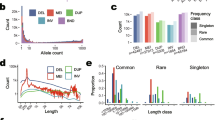Mutations in the mouse Brachyury (T) gene are characterized by a dominant reduction of tail length and recessive lethality. Two quantitative trait loci, Brachyury-modifier 1 and 2 (Brm1 and Brm2) are defined by alleles that enhance the short-tail Brachyury phenotype. Here we report on a genetic analysis of a visible dominant mutation Abnormal feet and tail (Aft) located in the vicinity of Brm1. Affected animals display kinky tails and syndactyly in the hindlimbs, both likely resulting from a defect in apoptosis. We observed an unusual genetic incompatibility between Aft and certain genetic backgrounds. We show that Aft and T are likely to interact genetically, since some double heterozygotes are tailless. In addition to the tail and hindlimb phenotypes, Aft-bearing mutants display characteristic late-onset skin lesions. We therefore tested for allelism between Aft and a closely linked recessive mutation rough coat (rc) and found that these two mutations are likely nonallelic. Our results provide a valuable resource for the study of mammalian skin development and contribute to the genetic analysis of Brachyury function.
Similar content being viewed by others
Author information
Authors and Affiliations
Rights and permissions
About this article
Cite this article
Ruvinsky, I., Chertkov, O., Borue, X. et al. Genetics analysis of mouse mutations Abnormal feet and tail and rough coat, which cause developmental abnormalities and alopecia . Mamm Genome 13, 675–679 (2002). https://doi.org/10.1007/s00335-002-2191-6
Received:
Accepted:
Issue Date:
DOI: https://doi.org/10.1007/s00335-002-2191-6




